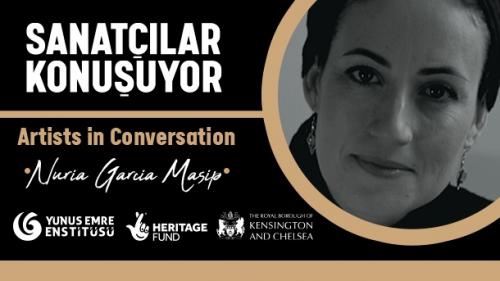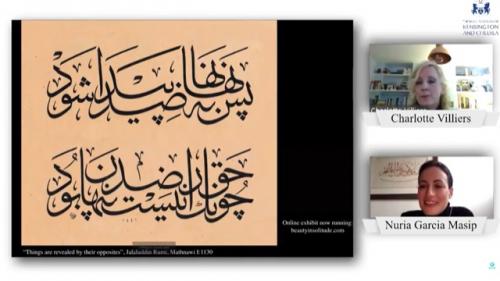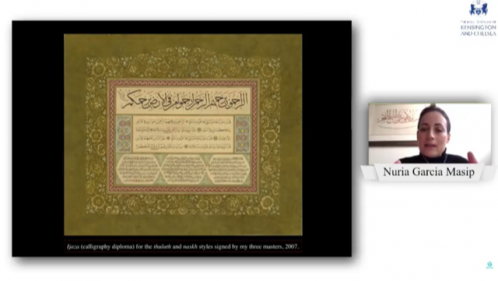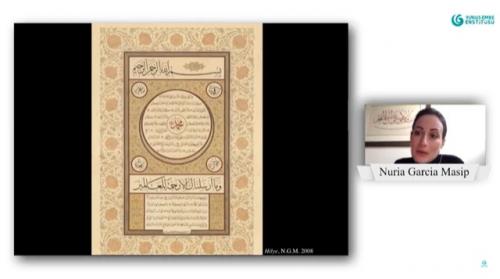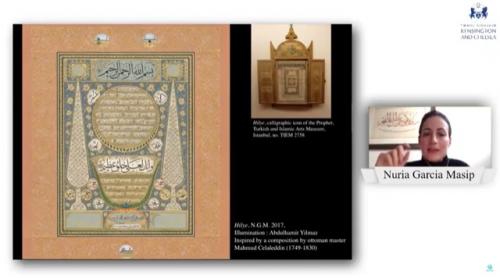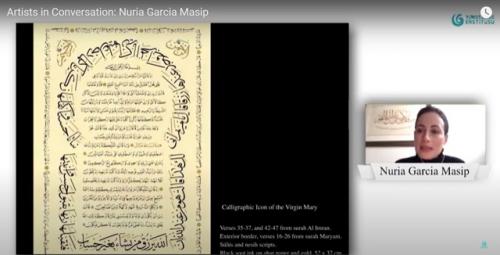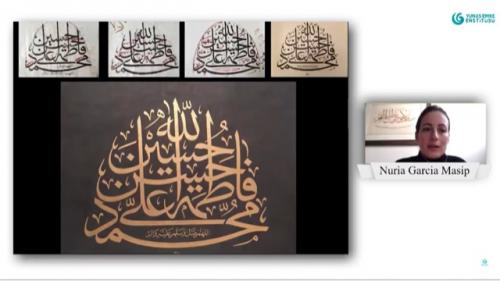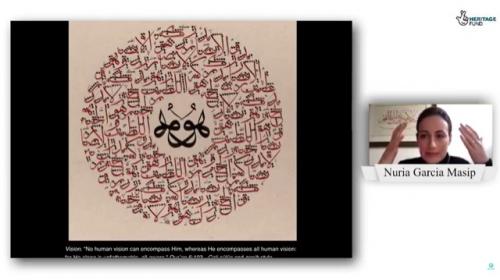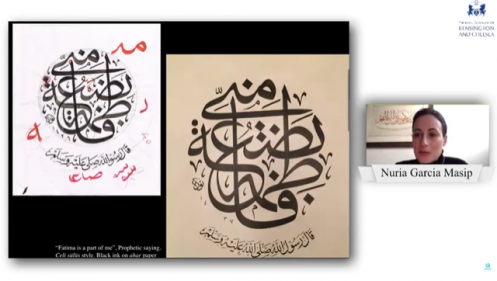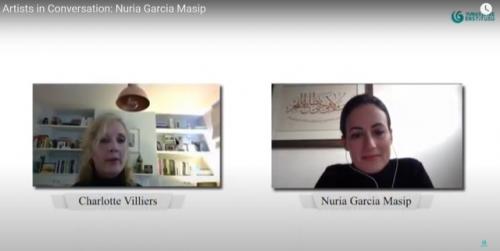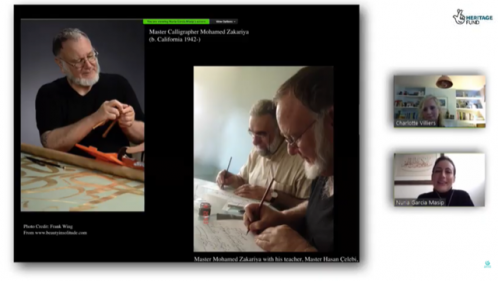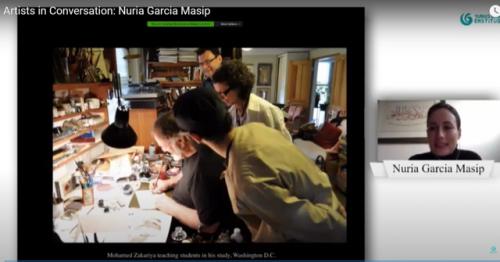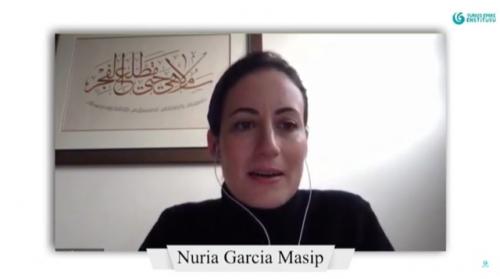Artists in Conversation: Nuria Garcia Masip
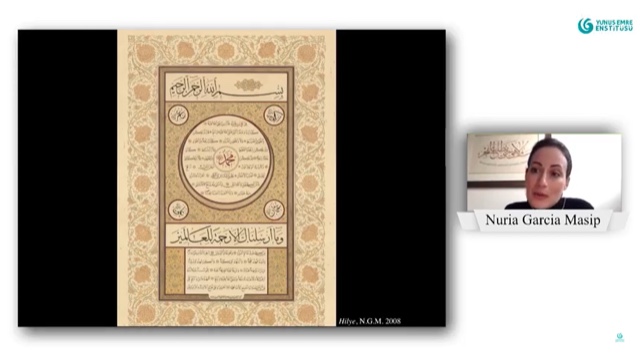 In cooperation with the Leighton House Museum, Yunus Emre Institute's London branch has launched the "Artists in Conversation" program series in which Turkey's traditional arts and crafts will be promoted by major contemporary artists. During the interviews, the artists will talk about their own experiences and ideas in describing the lesser known aspects and rituals of our traditional arts and crafts. The first interview was with Calligrapher Nuria Garcia Masip. During the interview, moderated by Charlotte Villiers, and aired from the Institute's social media accounts on June 16, 2020, Masip shared her journey to the artistic path of calligraphy.
In cooperation with the Leighton House Museum, Yunus Emre Institute's London branch has launched the "Artists in Conversation" program series in which Turkey's traditional arts and crafts will be promoted by major contemporary artists. During the interviews, the artists will talk about their own experiences and ideas in describing the lesser known aspects and rituals of our traditional arts and crafts. The first interview was with Calligrapher Nuria Garcia Masip. During the interview, moderated by Charlotte Villiers, and aired from the Institute's social media accounts on June 16, 2020, Masip shared her journey to the artistic path of calligraphy.
Nuria Garcia Masip's art training started in Morocco, and she studied the rik’a, sülüs, and nesih scripts with master calligrapher Mohamed Zakariya, and she continued to study the sülüs, and nesih scripts with masters Hasan Çelebi, and Davut Bektaş in Istanbul. |
Nuria Garcia Masip stated that she developed an interest for Islamic arts after her university education, and her artistic journey started in Morocco and continued with her study of the rik’a, sülüs, and nesih scripts with Calligrapher Mohamed Zakariya, whose mastery in art had been endorsed by Calligrapher Hasan Çelebi. Masip indicated that after she got her mastery endorsed, she followed the advice of her friend to go to Istanbul to study the nesih and sülüs scripts with calligraphers Hasan Çelebi and Davut Bektaş. She described the relationship between the student and the teacher, training methods used and curriculum followed in the traditional art of calligraphy.
PATIENCE AND PERSEVERANCE ARE WHAT MATTERS MOST
"In this art, patience and perseverance are more important than talent." |
asip indicated that she learned from her teachers that patience and perseverance are more important than talent for calligraphy. She explained that she went through stages of Meşki Ameli, in which the skills of writing are improved through repeated practice, Meşki Nazari, in which the skills of looking and seeing are learned, and Meşki Hayali, which is the stage of imagining and planning the work.
Masip said that although her skills for writing and teaching for the sülüs and nesih scripts were endorsed by her three teachers in 2007, she continued to study with her teachers regularly as there was not end to learning in this art.
During the event, the 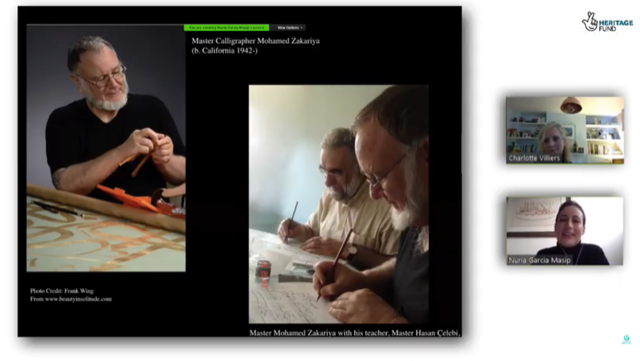 contents of the works including verses and suras, hadiths and hilye-i şerifs written by Nuria Garcia Masip with the nesih and sülüs scripts were explained.
contents of the works including verses and suras, hadiths and hilye-i şerifs written by Nuria Garcia Masip with the nesih and sülüs scripts were explained.
The interview, aired live from social media accounts of both institutions, ended with the question and answer section.
To watch the video of the event:

